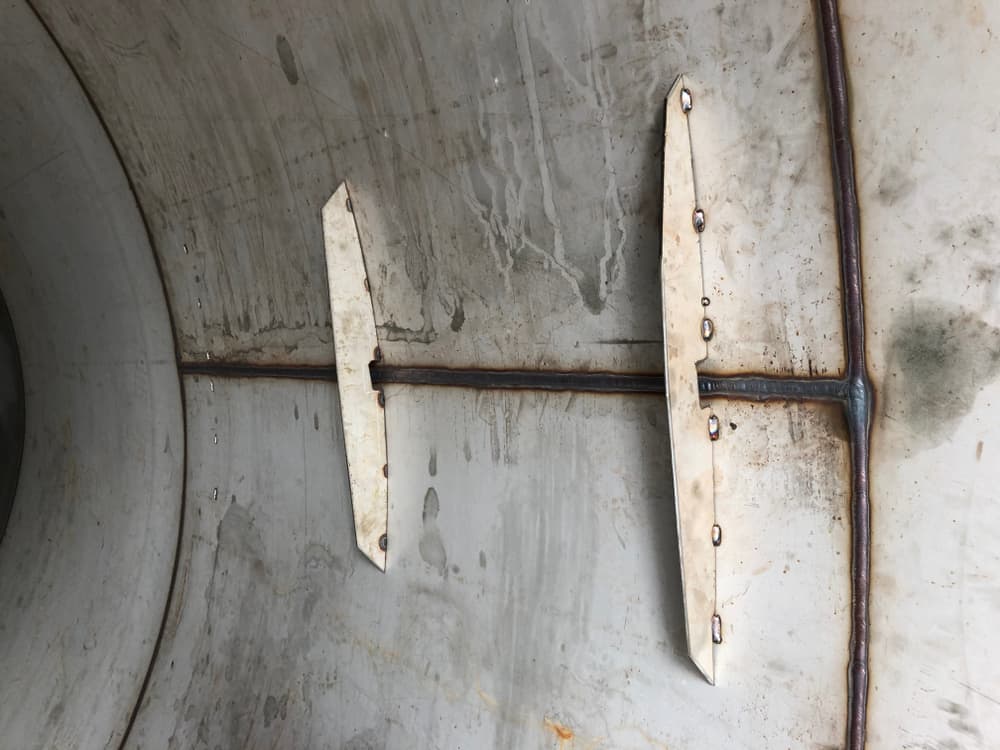
From nuclear waste storage to food and chemical processing, companies employ pressure vessels for wide-ranging applications. Since these pressure vessels accommodate high-pressure storage or fluid transfer, they must provide maximum strength. Weld joints in the vessels require special attention to ensure quality and operational continuity.
To maintain optimal weld quality, manufacturers should understand the preparation that occurs before welding the vessel surface. An ideal surface or joint welding prep in pressure vessel fabrication not only benefits the vessel’s structural integrity but also helps ensure the cost-effectiveness of the process.
Concerns With Pressure Vessel Fabrication
Although welding preparation benefits almost any application, it is vital for pressure vessels, given their critical nature. Proper preparation and cleanliness of the worksite, materials, and equipment can help ensure the weld does not include any porosity or inclusions; likewise, good preparation can help prevent the development of cracks that can lead to failure when repeatedly exposed to extreme pressure. Common issues in pressure vessel welding are discussed below.
Porosity
During welding, excess heat can cause gas or vapors to be trapped in the weld pool. As the molten pool solidifies, the trapped gas forms pores, which can compromise the strength of the pressure vessel.
Ensuring weld area cleanliness prevents any potential hydrocarbon in the weld area from dissolving in the weld pool. As a result, the risk of hydrogen pocket formation in the weld pool after solidification is minimized.
Inclusions
Inclusions can involve any kind of surface area foreign particles that may hinder the quality of the weld. The particles, or slag, can mix with the weld pool and become trapped once solidification occurs. A thorough cleaning of the weld surface can reduce the likelihood of inclusions.
Cracking
Cracks can form in the weld due to excessive mechanical stress. A narrow bevel can cause greater mechanical stress during the solidification. And high stress can give rise to cracks in the weld, also known as hot cracking. Preventing this issue requires proper edge preparation. Machining the edges can create an accurately angled bevel.
On the other hand, cracks can appear due to stress, possible inclusions, or a change in mechanical properties after the welding process is completed. Also known as cold crack, this issue can be avoided by properly drying the components before welding and by ensuring clean surfaces and equipment. This helps welders avoid the potential decomposition of foreign particles or the formation of pores.
Corrosion
Corrosion, or rust, can be a common concern across industries. Contamination can give rise to rust after welding, especially when welding stainless steel, resulting in extreme strength loss and component failure.
As a preventive measure for welding prep in pressure vessel fabrication, a magnetic brush can be used to clean the surface. This surface cleaning can remove the potential source of cross-contamination and improve the quality of the weld joint.
Potential defects like these can be identified by conducting a non-destructive inspection to analyze the root cause of defects and optimize manufacturing processes for enhanced quality.
Establishing Proper Welding Prep in Pressure Vessel Fabrication To Prevent Failure
Strength and weld quality are crucial aspects of pressure vessel fabrication; proper welding prep enhances both. By establishing weld prep as a best practice, manufacturers can avoid costly reworks while maintaining operational and human safety. Weld prep accompanied by an automated orbital GTAW welding with controlled parameters such as voltage, feed rate, and power supply can prove to be an ideal practice to reduce common concerns in pressure vessel fabrication.
Arc Machines, Inc. is a leading provider of automated welding solutions with decades of experience and expertise in pressure vessel fabrication. For inquiries regarding products, contact sales@arcmachines.com. Arc Machines looks forward to providing the equipment and services your project needs. Contact us to learn more.




